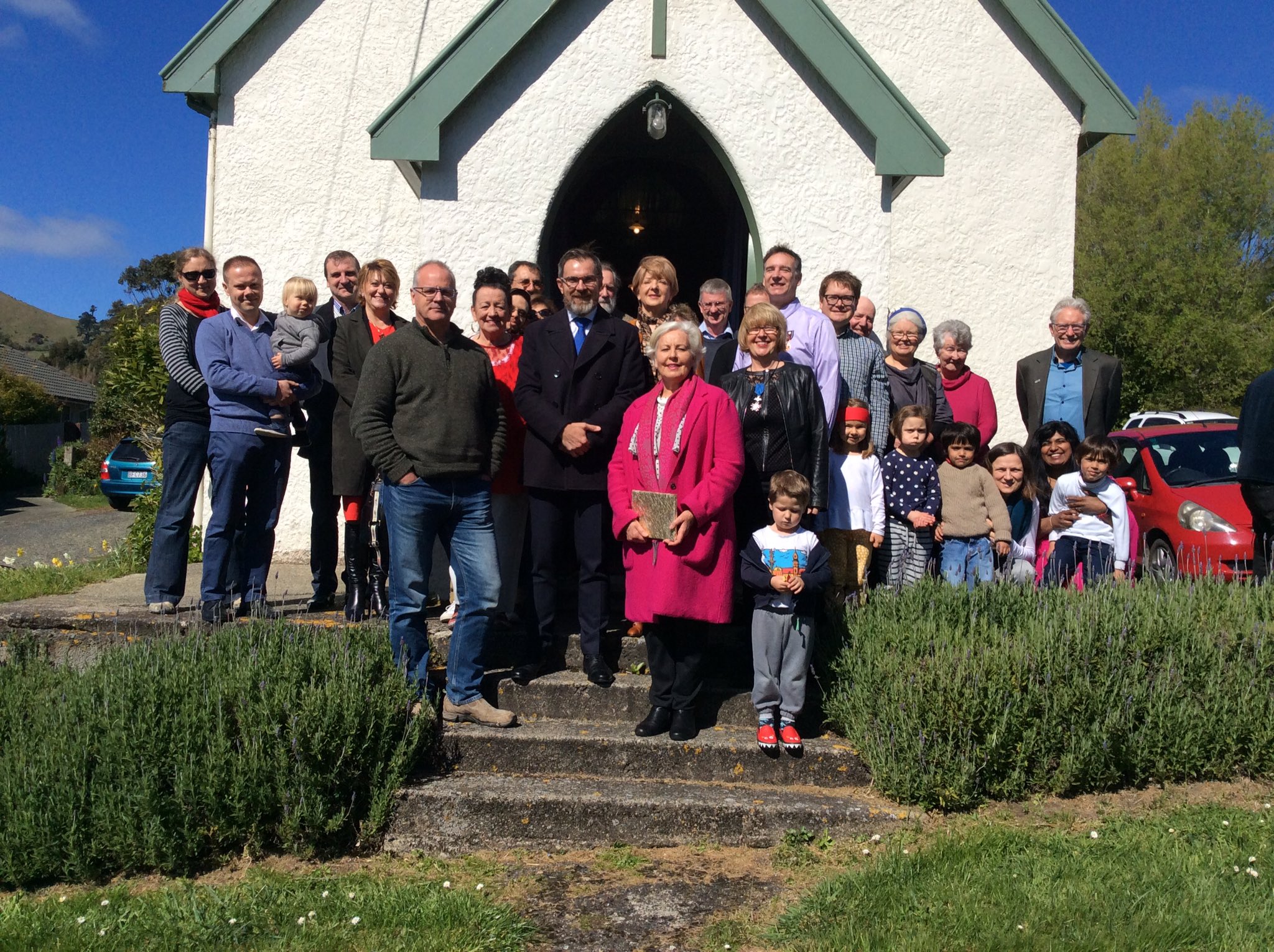New street name in Otago to honour first Polish settlers
21.09.2020
On Sunday, 20 September 2020, Ambassador Z. Gniatkowski participated in the ceremony of unveiling of a new street honouring early Polish settlers in Mosgiel, in Otago. Pomerania Way has been inaugurated thanks to the efforts of the Polish Heritage of Otago and Southland Charitable Trust (POHOS).

Apart from the Polish Ambassador, the event gathered Deputy Mayor Christine Garey, members of POHOS and Polish descendants.
The new street was named after the region of Pomerania in Poland, from where some of the first Polish settlers arrived in Port Chalmers in 1872. Many of them settled in Waihola, East Taieri and Mosgiel. The ceremony followed a Mass that was held at the at the Polish Church in Broad Bay.
The Polish Ambassador recalled the history of the church: The Polish community in Waihola valued being able to practice their religion freely. In 1899, they built their own church, and one of the builders was August Orłowski. A small wooden Church of Mary Queen of Peace, originally named after St Hyacinth, was later moved to Broad Bay, where it serves Dunedin’s Polish community and local Catholics until today.
According to Poles Down South website: The “Palmerston” was the second major shipment of Poles to New Zealand and the first to the Otago Province, under the scheme. The “Palmerston” arrived at Port Chalmers on the 6th of December, 1872 and carried some 105 Poles, the largest contingent to Otago. The majority of these Poles came from what was then West Prussia, ethnically the Polish regions of Kashubia & Kociewie in North Poland. (…) By the end of January the single men were easily disposed of, or found work on their own accord, however the disposal of the married immigrants was proving harder to employ. It was known that farmers and run-holders were not too keen on employing them, due to the number of children and lack of English. 28 families in the barracks by this stage were engaged on farms and stations except for the lot from Kociewie & Kaszuby, stating there being little demand for them. Mr. Collin Allan, the Immigration Officer at the time, applied to Mr. J. Smith, Messrs Brodgent’s agent, to give the remaining families a contract on the Southern Trunk Railway. With an interpreter this offer was agreed upon, not before it was suggested that two confident immigrants first visit the work site and report back. In the last quarter of 1871 the Government had entered into an agreement with Messrs. John Brogden and Sons of England to build the remainder of the Dunedin – Clutha line, a portion of track across the Taieri extending a distance of 34 miles 55 chains, the contractors agreeing to complete the line by the 1st of September 1875. (…)” More information is available HERE.
Concluding, Ambassador Z. Gniatkowski added: The Polish settlers who made New Zealand their home, were pioneers of the best. Thanks to all their experience and strength of character, gained from their native land, they were of critical importance to the economy in NZ. We can definitely be proud of our first countrymen’s struggles.
The unveiling of Pomerania Way launched celebrations of 150th anniversary of the Polish Early Settlement in Otago to be observed in 2022.


